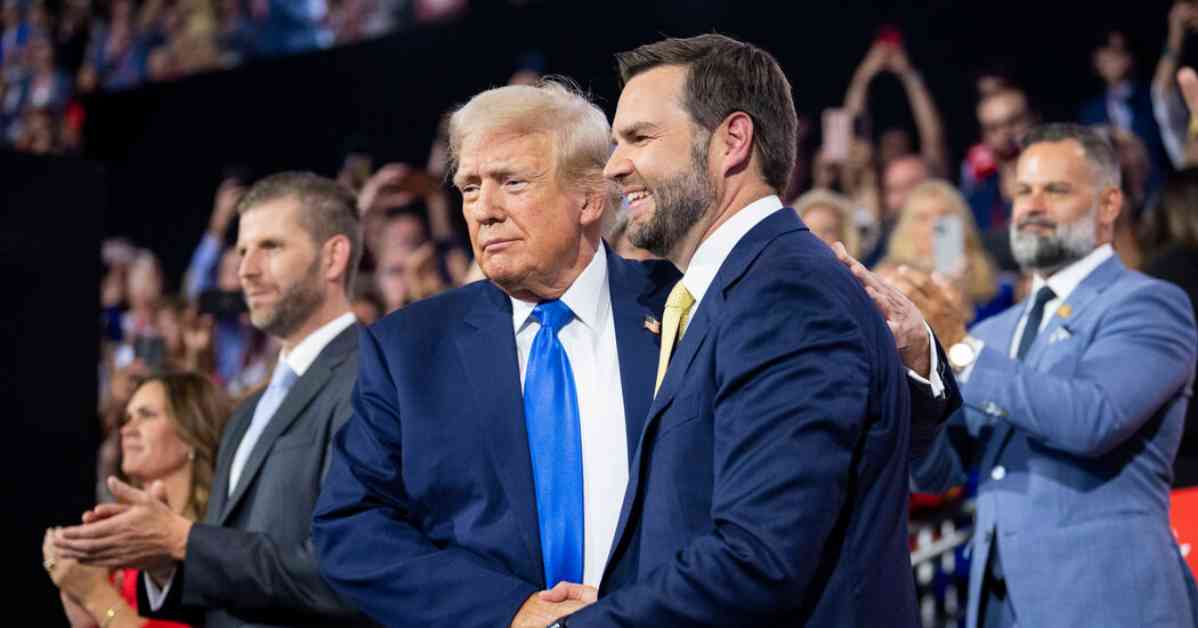Good evening from Milwaukee, where I had a relish tray last night. Today, I’m looking at how the Republican National Convention has become a conversion story. Then, we zoom into a light-blue state where Republicans think they have a shot in November.
When Senator J.D. Vance of Ohio takes the stage in Milwaukee tonight to accept his party’s nomination to be vice president, he will complete the final stage in his transformation from foil to acolyte of former President Donald Trump. His long history of disparaging Trump, whom he has called an “idiot” and “cultural heroin,” does not make him less suited for elevation within his party. Rather, it makes him a better avatar for the tale Trump wants to tell.
Vance is a political convert, whose remaking of himself and his political image in order to thrive in Trump’s Republican Party proves and reinforces Trump’s power. And he will serve as a capstone for a convention that has been a conversion story unto itself.
Conversion is a defining feature of today’s Republican Party, given how full it is of Republicans who did not much like Trump when he cannonballed into politics in 2016, and how far it has moved from the Reaganesque tenets that once defined it. The intraparty unity on display here is possible only because a lot of people have changed their minds about the former president over the past eight years. Trump himself, a former Democrat, has changed his politics, too.
Trump cares little about whether his converts are doing so for pragmatic reasons or moral ones, just as long as their fealty is public, and over the course of this week, Trump has paraded his converts for all the country to see.
The power of Trump’s conversion lies in his ability to bring people from various backgrounds and beliefs under his wing. The Republican National Convention has become a stage for this transformation, showcasing individuals like Senator J.D. Vance of Ohio, who have transitioned from critics to supporters of Trump.
The shift within the Republican Party is evident, as many who were initially skeptical of Trump have now embraced his leadership. This unity, though born out of differing motivations, has created a cohesive narrative for the party, one that revolves around Trump’s influence and the loyalty he commands.
As the convention unfolds, it becomes clear that Trump’s power lies not only in his policies but also in his ability to inspire conversion and loyalty among his followers. The spectacle of former rivals coming together in support of Trump is a testament to his influence and the changing landscape of the Republican Party.
In a light-blue state where Republicans see an opportunity in the upcoming elections, the impact of Trump’s conversion strategy is especially pronounced. The narrative of transformation and unity that has defined the convention has the potential to sway undecided voters and solidify support for the party in November.
Overall, the power of Trump’s conversion lies in its ability to reshape perceptions, forge new alliances, and create a sense of purpose and direction within the Republican Party. The transformation of individuals like Senator J.D. Vance underscores the evolving nature of politics and the enduring influence of charismatic leaders like Trump.




